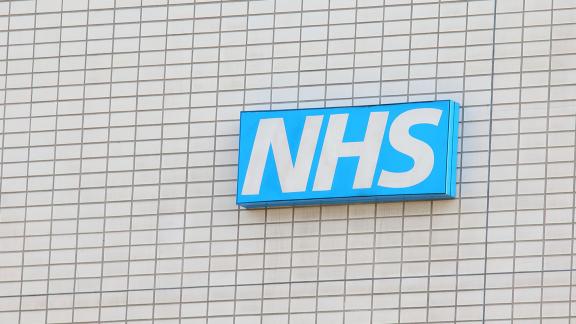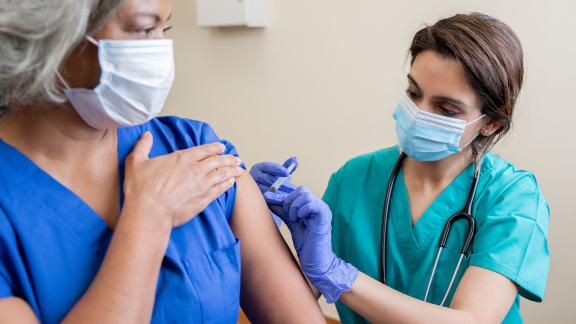Autumn Budget and Spending Review 2021: what you need to know

Key points
- The Department for Health and Social Care capital budget will increase at an average of 3.8 per cent per year over the Spending Review (SR) period to reach £11.2 billion in 2024/25. This rise is in line with what we called for in our recent report, Beyond Bricks and Mortar. This is a welcome rise that will help the NHS embed recent positive changes brought on by the pandemic and assist in addressing the elective backlog. However, this figure only now returns the capital spending to where it was in 2010 and comes at a time when the NHS in England has a £9.2 billion maintenance backlog.
- The Budget confirms the recent NHS revenue funding announcement. NHS England’s resource budget will rise to £162.6 billion in 2024-25 (3.8 per cent average real terms growth up to 2024-25). The government plans to spend over £8 billion over the SR21 period to tackle the elective backlog, as announced as part of the Health and Social Care Levy.
- The Budget reaffirms many government commitments, such as 50,000 more nurses and 50 million more GP appointments, while not setting aside any additional funding to deliver these commitments at this stage, nor setting out a long-term workforce funding settlement. This is a missed opportunity. To ensure the extra money delivers for the public, a strong and supported NHS workforce is needed. This is why training and increasing the supply of doctors, nurses and other health and care professionals is so important.
- Similarly, the public health grant will stay the same in real terms over the SR period, far short of what’s needed to reduce inequalities and help address issues made worse by the pandemic.
Overview
In early September, the government announced a revenue funding settlement of £36 billion (£30.3 billion for England) for health and care to 2024/25, funded in part by a new health and care levy: a 1.25 per cent increase in National Insurance contributions. This Budget and Spending Review set out how this money will be spent in more detail as well as setting out the capital budget for the Spending Review period (2022/23 to 2024/25, known as SR21. See Appendix for detail).
While all the funding – except for a very few items – is new, as this is a fresh spending period, many were announced in advance of today’s speech by the Chancellor.
NHS England’s resource budget will rise to £162.6 billion in 2024-25 (3.8 per cent average real terms growth up to 2024-25). The government plans to spend over £8 billion during the SR21 period to tackle the elective backlog, as announced as part of the Health and Social Care Levy.
Department of Health and Social Care (DHSC) capital spending will rise to £11.2 billion in 2024/25 (3.8 per cent average real terms growth up to 2024-25). This includes:
- as trailed, a £5.9 billion fund to help reduce the elective backlog, including £2.3 billion for increased diagnostic capacity, including funding for 100 new community diagnostic hubs; £2.1 billion to support the innovative use of digital technology; and £1.5 billion over the SR21 period for new surgical hubs, increased bed capacity and equipment to help elective services recover.
- £300 million over the SR21 period to complete the programme to replace mental health dormitories with single en-suite rooms and £150 million over the SR21 period to invest in NHS mental health facilities linked to A&E and to enhance patient safety in mental health units.
- £4.2 billion over the next three years for 40 new hospitals and over 70 hospital upgrades. This is unchanged from the March 2021 Budget.
On workforce, the government reaffirmed commitment to recruiting 50,000 new nurses and promised an increase in funding to increase the size and training of NHS staff. However, the Budget doesn’t set out in detail how this will be funded. The government is increasing apprenticeships funding to £2.7 billion by 2024-25.
The budget maintains the Public Health Grant in real terms over three years. As previously announced, discharge-to-assess funding for community providers will not continue after this year.
Mental health funding includes:
- a new budget of £150 million over a three-year period to invest in NHS mental health facilities linked to A&E and to enhance patient safety in mental health units.
- £201 million in 2024-25 for family support services, including £18 million to create family hubs in 75 local authorities, supporting infant and paternal mental health.
- The Budget reaffirms the commitment to provide 50 million more appointments in primary care but does not earmark new funding.
Of the £5.4 billion already announced for social care in September, £3.6 billion will be allocated to local government over three years to implement the cap on personal care costs and changes to the means test.
Over the three-year period, £1.7 billion will be allocated to enhance the quality and integration of the social care system, including at least £500 million to improve qualifications, skills and wellbeing across the adult social care workforce.
The Budget also sets out funding for areas relevant to healthcare:
- An end to the public sector pay freeze.
- A £24 billion multi-year settlement for housing, including an £11.5 billion affordable homes programme and a £5 billion grant funding to remove unsafe cladding from the highest-risk buildings.
- Cutting the Universal Credit (UC) taper rate from 63p to 55p and increasing work allowances by £500 per year. This represents an effective tax cut for low income working households in receipt of UC worth £2.2 billion in 2022-23.
- A £500 million household support fund to help the most vulnerable families with the cost of living this winter.
- From 1 April 2022, the government will increase the national living wage for individuals aged 23 and over by 6.6 per cent, from £8.91 to £9.50 an hour.
- Various funds related to climate change, including £620 million to support the transition to electric vehicles, £2 billion for cycling and walking, and £3.9 billion to decarbonise buildings, including £1.8 billion to support tens of thousands of low-income households to make the transition to net zero while reducing their energy bills.
- Research and development spending will rise from 0.7 per cent of GDP in 2018 to 1.1 per cent in 2024.
Devolved administrations will receive £8.7 billion additional funding, which they can spend on public services including health and care: £9.7 billion, for the Scottish Government, £2.5 billion for the Welsh Government and £1.6 billion for the Northern Ireland Executive.
Analysis
The funding is a start, but falls short of the £10 billion of funding our members in England told us they need next year.
The capital budget is only now returning to the level it was in 2010
We are pleased to see the overall DHSC capital budget increase and systems offered the flexibility to spend it according to their need. We outlined the benefits of capital investment in our report, Beyond Bricks and Mortar, in early October. This money will be essential to begin to reduce the backlog, embed positive pandemic-era changes and work towards the NHS’s net-zero target.
However, the capital budget is only now returning to the level it was in 2010. The years that followed saw a steady decrease in capital funding and the UK falling behind OECD peers. In the final years of last decade, the NHS capital budget was regularly raided to pay for service funding. There is a large mountain to climb. To put this in some form of context, the NHS’s maintenance backlog now stands at £9.2 billion.
In addition, the £150 million of capital funding for mental health is welcome, but falls far short of the estimated £3 billion that is needed to make mental health estates safe and fit for the 21st century. It is only a tiny fraction of the capital settlement, reflecting long-term trends of mental health being overlooked in capital settlements.
The increase in revenue funding reflects what was announced in early September. As we said at the time, the funding is a start, but falls short of the £10 billion of funding our members in England told us they need next year as we outlined in our joint report with NHS Providers. It’s important the government is honest with the public about the scale of the challenge in the years to come and how much this will cost.
COVID-19 has shown how much non-healthcare-related factors impact health and care. But this Budget doesn’t do enough to address these issues. We welcome the first projects for the Levelling Up Fund and Community Ownership Funds. However, there is scope to do more with further funding to support people in their communities, pre-empt them needing care and improve the nation’s health. We await further detail we in the forthcoming Levelling Up white paper.
All these announcements mean nothing without the workforce
Similarly, the public health grant will stay the same in real terms over the SR period; far short of what’s needed to reduce inequalities and help address issues made worse by the pandemic. Addressing these issues extends beyond the health sector, and the government should consider how its economic policies can be used to better health outcomes too.
All these announcements mean nothing without the workforce. NHS staff have worked tirelessly throughout the pandemic, and many are burnt out and under immense amounts of stress. We are also 90,000 staff short across the NHS.
Primary care, for example, cannot meet the commitment to increase GP appointments without more staff. Primary care involves extended teams of professionals working alongside GPs to deliver the most appropriate patient care. We need assurances from the government that these roles will continue beyond the existing contract period to allow primary care providers to expand capacity so patients can see the right person for their needs.
Therefore, it is disappointing to see so little detail about Health Education England budgets in today’s announcement and we will be seeking more information to avoid staff shortages, including in the smaller allied health professions, from contributing to elective backlogs delays. Reducing the large shortages will only come with a long-term funding settlement and strategy.
The Budget also failed to address issues with the NHS Pension Scheme to provide flexibility and ensure there are no further reductions in the lifetime allowance. Without changes, there is a risk that senior staff will leave their professions.
Employers will welcome the continued focus on apprenticeships. In the NHS this is an important route to support people into the workforce and support our existing workforce to develop. However, the Budget does not go far enough and doesn’t include the necessary funding to expand these apprenticeships significantly.
No additional funding for NHS mental health services endangers the sector's ability to implement existing government commitments
The £18 million to create a network of family hubs will go some way in providing necessary early intervention mental health support for parents and children. However, the funding is not available until 2024/25 and will only cover half of local authority areas. We need increased early intervention services for children and young people now, to help stop more serious mental health conditions emerging.
No additional funding for NHS mental health services endangers the sector's ability to implement existing government commitments such as the NHS Long Term Plan, Mental Health Act reform and new clinical standards.
Having brought together member priorities and concerns from across the whole system through a series of workshops, our influencing work for this Spending Review included a formal submission to HM Treasury, a joint report with NHS Providers on the NHS revenue needs, and a capital report setting out why capital investment is so important for the NHS. Alongside this we met regularly with government officials to share health leaders’ priorities for NHS finance and the Budget.
Key actions for the NHS Confederation
- We will continue to meet with senior leaders across NHS England and NHS Improvement, the civil service and government to influence how this money is spent. This includes monitoring the impact of the forthcoming winter on members’ finances.
- We will draft a formal representation to the Spring Budget, leading with members’ funding concerns from the forthcoming winter.
Key actions for members
- As part of our financial influencing work, we want to hear from you about how this Budget affects you and what more you need from the government and NHS England and NHS Improvement to get on with treating patients effectively. Please contact Jonathan Barron.
- The NHS Confederation ICS Network and NHS Clinical Commissioners joint finance forum meets bi-monthly to explore key finance policy issues which will shape the future of the NHS and to engage with national policy stakeholders. The forum is open to CCG and system stakeholders with an interest in finance, not just to specific role holders. If you would like to get involved or find out more, please contact Ed Jones.
Appendix: Background to this year’s Budget and Spending Review
Department of Health and Social Care departmental spending
Today’s announcement was both a Budget and a Spending Review. Spending Reviews set out the government’s long-term expenditure plans for departments while the Budget sets the day-to-day spending over the coming year. In recent years however, health and care spending announcements have largely fallen outside the usual Budget and Spending Review cycle; a process started with Theresa May’s 2018 settlement, accelerated with COVID-19, and continued with this September’s revenue funding announcement.
The September announcement set an overall envelope for total health and care revenue spending (known as RDEL) until 2024/25, while also introducing a new Health and Care Levy, a 1.25 per cent increase in National Insurance contributions, to pay for it. While setting the envelope, the announcement did not set out exactly how this money would be spent, nor did it set the capital budget (CDEL). This is what was outlined in more detail today.
Throughout the pandemic, in addition to the normal recurrent funding the NHS receives, the Department of Health and Social Care also received non-recurrent cash injections to fight COVID-19 at Budget 20, Budget 21 and Spending Review 21, totalling £40.3 billion in 20/21 and £29.5 billion in 21/22. These non-recurrent payments finish at the end of 21/22.
Political context
Delivering the Autumn Budget and Spending Review in the Commons, the Chancellor promised a real-term spending increase for ‘every single department,’ presenting the government as ‘the real party of public services.’ Undoing much of the work of his Conservative predecessors over the past decade, Rishi Sunak unveiled increases in real-terms spending, including in many areas of public spending that have not received a real-terms increase since the Conservatives entered office in 2010.
Keen to place the recovery of the NHS at the forefront of the government’s priorities, the Chancellor had let it be known ahead of the Budget that the NHS in England would receive an additional £5.9 billion, exclusively for capital investment in infrastructure and equipment.
Many working in the public sector and those on the opposition benches may contend that the Budget’s spending increases will neither compensate for a decade of the freezes and cuts experienced by many public services, nor compensate for tax increases and steep rises in living costs. Labour’s Shadow Chancellor Rachel Reeves responded to the Budget by alleging that ‘the Conservatives are now the party of high taxation,’ accusing Sunak of leaving ‘working families out of pocket,’ Ms Reeves added: “Never has a chancellor asked the British people to pay so much for so little.”
While many Conservative MPs will contend that the Budget provides further confirmation of the government’s commitment to the levelling-up agenda, many other Conservative MPs will also quietly find themselves anxious about the increasing size of the state, as the national tax burden reaches its highest level since 1950.



